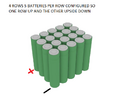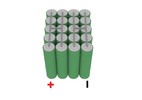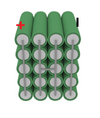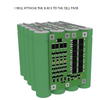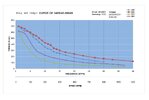sheffieldyorky
New Member
I want to build a battery charger for my bank of 20 Li-ion 5000mAh 26650A.
Held in place by Battery Bracket Plastic Holder.
These will then be ready to be spot-welded with nickel strips
Finally covered by a Lithium battery pack charge controller with a balancer module function (HX-4S-F30A)
I am now reading various disturbing reports about “Li-ion 5000mAh 26650A” batteries catching fire if one starts then they follow on and are extremely hard to extinguish.
I have a couple of Stepper motors kicking about and I was hoping to use either one or both with a shaft coupling.
The person/company that gave me these specifications has now become uncontactable.
I have all the tools needed for the project plus testing equipment.
I am seeking a tried and tested schematic for a “battery charging unit”
Once this is built I am hoping to build a pure sine wave 1200-watt inverter, as a tried and tested schematic for this unit
I have some spare double-sided Breadboard Prototyping Strip Board, or if it is not feasible I bow to your advice.
Held in place by Battery Bracket Plastic Holder.
These will then be ready to be spot-welded with nickel strips
Finally covered by a Lithium battery pack charge controller with a balancer module function (HX-4S-F30A)
I am now reading various disturbing reports about “Li-ion 5000mAh 26650A” batteries catching fire if one starts then they follow on and are extremely hard to extinguish.
I have a couple of Stepper motors kicking about and I was hoping to use either one or both with a shaft coupling.
- 34HE45-6004S 6.0a 8.2Nm
- 34HE45-6004S 6a 12Nm
The person/company that gave me these specifications has now become uncontactable.
I have all the tools needed for the project plus testing equipment.
I am seeking a tried and tested schematic for a “battery charging unit”
Once this is built I am hoping to build a pure sine wave 1200-watt inverter, as a tried and tested schematic for this unit
I have some spare double-sided Breadboard Prototyping Strip Board, or if it is not feasible I bow to your advice.

